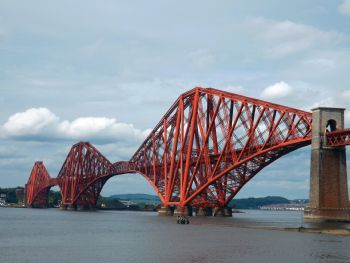
Funding worth £300,000 has been agreed for a project that will see every detail of the three major bridges over the River Forth digitally scanned. The bridges, which represent three centuries of Scottish engineering, innovation and design, will be ‘digitally mapped’ using laser technology used previously by the Scottish Ten group — a collaboration between specialists at Historic Scotland, experts in 3-D visualisation at Glasgow School of Art’s Digital Design Studio and the CyArk not-for-profit digital-heritage organisation. The project will begin next year; it will be carried out by Glasgow’s Centre for Digital Documentation and Visualisation. The digital content from the project will be provided to Scotland’s primary schools.
The funding will come from the Scottish Executive. Former First Minister Alex Salmond made the announcement at a visit to the Forth Replacement Crossing Contact and Education Centre in South Queensferry.
He said: “The Forth bridges represent Scotland’s industrial past, its creative present and our dynamic and innovative future. They are the pinnacle of world-leading design and engineering, so it is only right that we do all we can to conserve and protect them for future generations.
"This exciting new project will not only help to create an extremely accurate record for the conservation and management of the bridges, but will also provide digital content from which it will be possible to provide animations, ‘fly-throughs’ and basic education materials that will help to inspire the next generation of Scottish engineers. The bridges are iconic landmarks in Scotland; these digital images will no doubt help to showcase their magnificence and attract tourists from across the globe.”
Historic Scotland’s head of major projects, Chris McGregor, said: “Digitally documenting the Forth bridges is a fantastic opportunity both to showcase the three bridges in all their engineering glory and to use the latest digital surveying technologies in the most challenging of circumstances.
"Recording these inspiring bridges, each from a different century, will allow us to use technologies originally designed to
survey modern industrial complexes in extraordinary detail to help us maintain and interpret them for future generations. The resulting records will also enable us to share their secrets with new audiences across the world.”